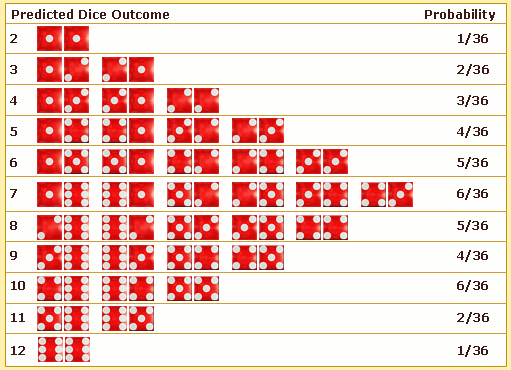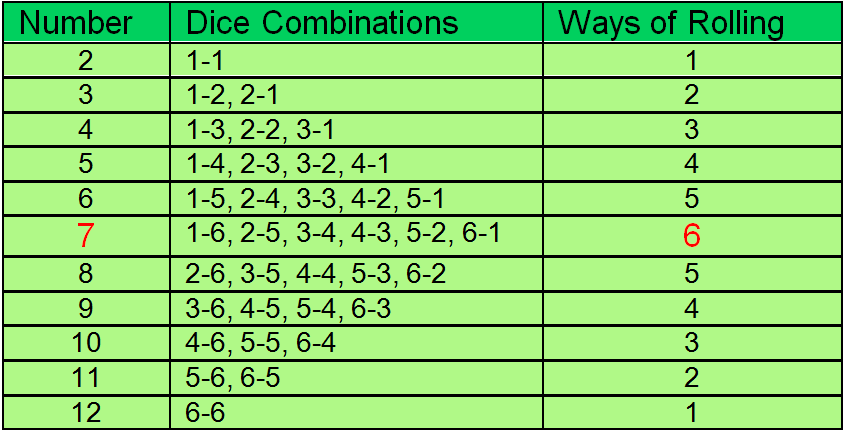Craps Dice Combos


Craps is a game where wagers are placed dependent on the outcome of the roll of two dice. Each die has 6 sides marked with 1 through 6 dots to represent numbers. The face-up values of both rolled dice add together to form one number. There are 36 possible combinations of the dice with numbers ranging from 2 to 12.


- When you’re at the craps tables, it won’t take you long to find someone using this set as it’s another popular set to use after the point has been established. The dice set shows only 6s and 8s on all 4 sides of the dice (Hard 6 & 8 on top & bottom and soft 8 & 6 on the front & back) and sports only 2 sevens if the dice stay on axis.
- The dice tumble or roll forward without any excessive bouncing, pitch, yaw, etc. Granted, the toss is a challenge, but you only have to control one roll out of 43 to turn the odds in your favor. Let's look at the 34-34 set first - the left die will have the 3 on the left face and the 4 on the right face.

Craps Dice Combos Poker
That's right. There are exactly six different axial sets. Again, the only difference is which number the shooter chooses to have 'up' or 'facing down table.' For simplicity sake I have arranged the sets in the chart below showing the axial faces of the individual sets. Remember, the axial set refers to the numbers showing on the SIDES (left/right) of each individual die prior to the toss. The objective is to toss the dice 'on axis' - as if there were a steel rod driven through the two dice like an automobile axle. The dice tumble or roll forward without any excessive bouncing, pitch, yaw, etc. Granted, the toss is a challenge, but you only have to control one roll out of 43 to turn the odds in your favor. Let's look at the 34-34 set first - the left die will have the 3 on the left face and the 4 on the right face. The right die will have the 3 on the left face and the 4 on the right face. If you have a pair of dice get them out and orient them like this. For the sake of this example, let's put the hard ten facing up - the twelve facing your chest, the hard four facing down - and the aces facing toward the computer screen. This is a preferred set for the come out roll. Why? Look at the distribution of numbers it yields when rolled on axis. There are four ways to make the seven and two ways to make the eleven. Instead of 8 naturals out of 36 combinations on a random roll - you have 6 naturals out of 16 combinations. The math of this should be obvious, even to those handicapped by advanced degrees. Okay, let's assume you throw five naturals before establishing a point - which turns out to be a ten. What do you do next? You have your choice of two axial sets. The first is the 52-52, which provides you with two ways to hit the ten when rolled on axis. But look at the incidence of sevens in this combination. There are four ways to make the sevens with this set - when rolled on axis. So a better choice is to switch to the 34-16 set - which reduces the incidence of the seven to two ways. Suddenly, instead of having 2-1 odds against winning on the ten - it is an even money bet. Suddenly, you have a 2-1 ADVANTAGE over the house on the free odds bet on the ten. That, my friend, is what dice setting and controlled rolling is all about.
|